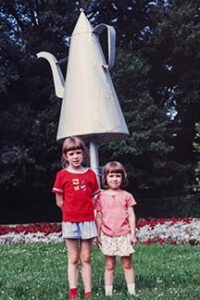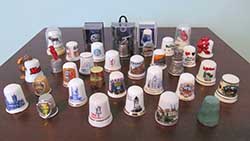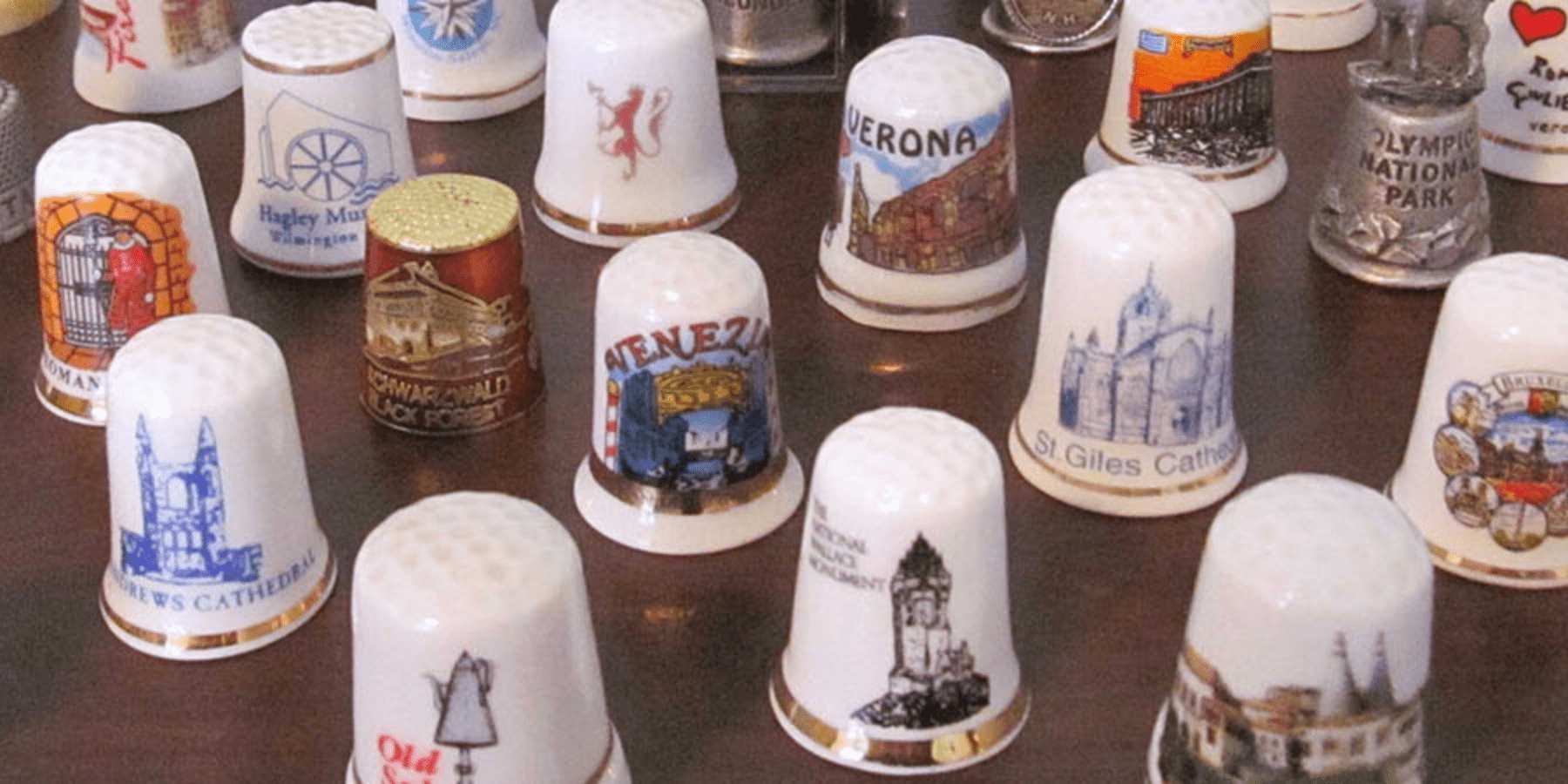Author: Katharine Noiva
My first and most extensive collection was inadvertently started during a trip to Winston-Salem, North Carolina. The excursion was one of my earliest trips as a child and, much like Shelburne Museum, Winston-Salem has a wealth of American history, including historical buildings, demonstrators showing off traditional trades, and a diverse range of American folk art.
At one of the gift shops, I found a basket filled with small, ceramic thimbles printed with the iconic Mickey Coffee Pot featured prominently in Old Salem. I had never seen a thimble presented as a souvenir, and it absolutely boggled my seven-year-old mind that anyone would want a collectible thimble. I was so tickled with the idea that I used my limited pocket money to buy one and unofficially began my collection.


Left: Katharine and younger sister in front of the Mickey Coffee Pot, a local landmark in Winston-Salem; Right: Katharine with a demonstrator in Old Salem being shown how to use a flintrock.
–
Travelling continued throughout my childhood, and I was surprised to learn that thimbles were a common souvenir and nearly ubiquitous in gift shops all over the country. Each year when we went up to Maine, I added another moose or lobster-themed thimble and bought others from New Hampshire and Delaware for my growing collection. On my first trip to the West Coast, I brought home several metal thimbles from Olympic National Park and Mount St. Helens in Washington.


Thimbles have a long history as souvenir trinkets. Before they became popular in modern day gift shops, thimbles were a part of almost every known culture—some of the earliest examples made of bronze and found in the ruins of Pompeii. It wasn’t until the Victorian Age that thimbles caught on as a common collection item. In 1851, the Great Exhibition was held in Hyde Park, London, and a commemorative thimble was created to celebrate the occasion. The exhibition and its souvenir thimble were massively popular, and thimble collecting soon took off among the masses.
My own thimble collection took a brief hiatus during my teenage years but resumed when I started traveling more extensively while studying abroad at St. Andrews in Scotland. Again, thimbles seemed to be popular in almost every gift shop and were an ideal small, affordable item that could easily be tucked into a pocket or suitcase between flights. I rounded out my collection to include others from Scotland, England, France, and Belgium.
My collection has continued to grow over the years, and my friends and family have helped add to the collection as they have gone through their own travels. My younger sister acquired several thimbles while she studied abroad in Germany, and I added a few more during my honeymoon in Italy. One of my favorites is a jade thimble that my grandmother left to me from her collection of jade jewelry. Each one represents a particular place and time, and the people who were with me.

As I look through my own collection, I can certainly understand why Electra was so inspired and compelled to collect. Much like Electra, I was moved by a sense of whimsy in the thimble and have formed a personal attachment to each individual piece. Collections not only tell a great deal about an individual, but they also come with a greater sense of history that reflects our unique world around us.

Katharine Noiva
Guide & Volunteer Coordinator

